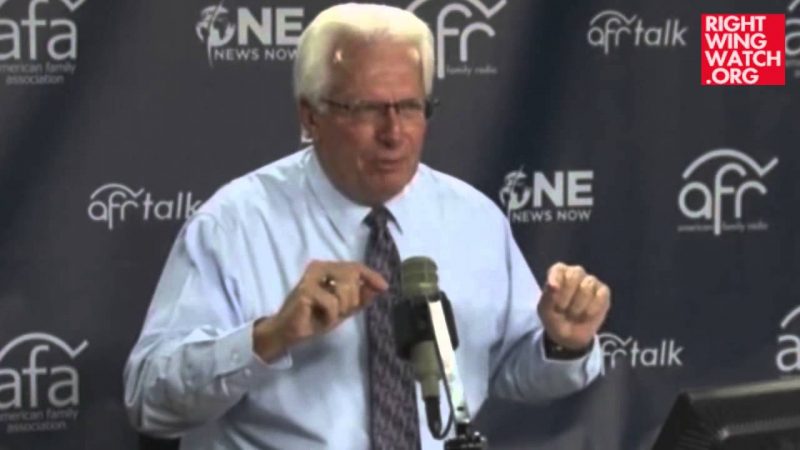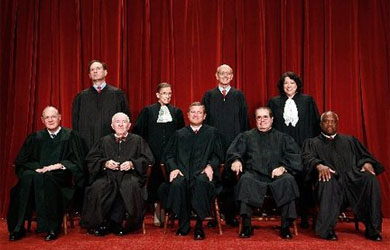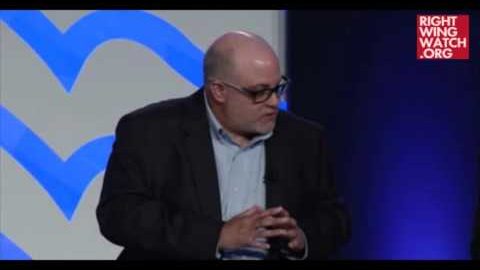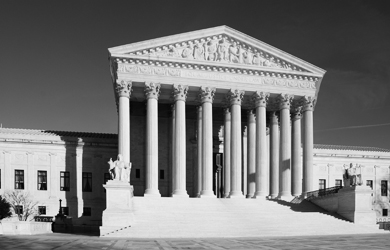This morning, the Supreme Court released its ruling in Trinity Lutheran Church v. Comer, an important church-state separation case involving a Missouri prohibition on direct payments by the government to a house of worship. Seven of the nine justices ruled in favor of the church, eroding church-state separation, but a majority of the Court made clear that its ruling was a very narrow one.
Missouri has a competitive grant program for organizations to improve their playgrounds, open to all to apply for. However, because the state constitution explicitly bans state funding of churches, Trinity Lutheran was ineligible to apply. Today, in an opinion authored by Chief Justice John Roberts, the Court ruled that this violates the federal Constitution’s Free Exercise Clause by denying Trinity Lutheran an otherwise available public benefit because of its religious status. Roberts’ opinion was joined by Justices Kennedy, Thomas, Alito, Kagan, and Gorsuch. Justice Breyer provided the seventh vote for the church in a separate concurrence with the judgment. Justices Ginsburg and Sotomayor dissented.
If the First Amendment didn’t have a clear prohibition of church-state separation, the majority’s argument might have some merit. But we do have a constitutional requirement to maintain a wall of separation between church and state, and it requires the government to treat certain entities differently because of their religious nature. As explained in an ACLU amicus brief that People For the American Way Foundation joined, the Supreme Court has never upheld direct taxpayer funding of a religious institution without adequate safeguards to prevent its misuse for sectarian ends. That is critically important, since Trinity Lutheran refused to certify that it would not use the publicly-funded improved playground for religious purposes.
Nevertheless, this was not a focus of the majority opinion. The Court (like the parties) focused on the Free Exercise Clause, not the Establishment Clause.
The Chief Justice wrote that this was not a case where public funding was being denied because of what the recipient would do with it (impermissibly use taxpayer money for religious purposes). Instead, Trinity Lutheran was being denied public funding because of what it is: a house of worship. It had a choice, Roberts wrote: either be denied a benefit everyone else receives, or give up its status as a religious entity. This triggers the highest level of scrutiny under the Free Exercise Clause, and the majority concluded that the state’s interest in achieving greater church-state separation than (it says) is required by the First Amendment is not sufficiently compelling to warrant the resultant limitation on Free Exercise.
(Interestingly, the word “federalism” does not appear anywhere in the Chief Justice’s opinion giving such short shrift to the state constitutional interest.)
This might seem to have enormous consequences, severely undermining the Establishment Clause. However, a majority of justices made clear that this case was decided far, far more narrowly. In fact, for this very reason, Justices Thomas and Gorsuch noted that they joined the six-justice majority opinion except for this one footnote:
This case involves express discrimination based on religious identity with respect to playground resurfacing. We do not address religious uses of funding or other forms of discrimination.
This vitally important limitation was supported by the four remaining justices in the majority opinion, plus Justice Breyer in his separate concurrence, thereby making it a part of the majority holding.
As important as this limitation is, the damage control may only be temporary, until the next case reaches the Court. Even before then, the existence of a precedent allowing direct taxpayer funding of a church activity with no way to know that it won’t be used for religious purposes weakens the Establishment Clause and does not bode well for the future.
This post originally appeared on People For the American Way Foundation’s blog.







